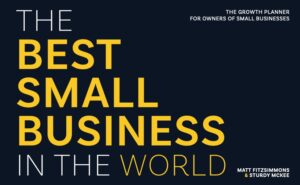I received an email today that stood out. Quite the feat in today’s email inundation.
The email was from someone starting out, and jokingly asking for encouragement that they can start a physical therapist private practice in a certain niche. The thing is, of course she can do it. Many people have done it. There are more resources than ever before to help her get her practice started.
And whether you are just starting out or are stuck at 5, 10, 25, or 50 employees, you can do it, too! You can break through to the next level. But I want to share something with you that I shared with her.
The challenge with most of the rehab industry, PT, OT, SLP, etc. is that they operate on about a 10% margin. A billing company surveyed their PT clients all across the country. The average profit margin across all companies? 10.8%!
Greg Crabtree (he wrote Simple Numbers, Straight Talk, Big Profits! 4 Keys to Unlock Your Business Potential…) calls 10% the new breakeven. 10% is just not enough, for a variety of reasons, not the least of which is the risk and responsibility you take on in owning and running a business.
Think of what that means as an investor/owner. To make $100k profit per year, you would need $1M in ARR (annual recurring revenue). And you know that your profit doesn’t all go into your pocket, right? Part of it may, but there are lots of other demands on your profit.
And at $1M ARR, that means you probably have about 10 employees. It means you have to rent/buy, equip, and furnish the space for them to work. It means you are on the hook for the lease or mortgage, the taxes, and more, no matter how well the business does.
A $1M business in this industry, if you run it like most everyone else, means you will likely have to deliver over 200 visits per week, every week of the year. To deliver — and get paid for — >200 visits per week, you will need to have 18-20 NEW patients every week. To do that, you will need to generate somewhere between 23-38 incoming phone calls or requests for appointments through your marketing efforts. It means you will need to do marketing of some sort. It means you will need a sales process for your employees dealing with the inbound leads. And it also means you will be spending around $65k per year to collect the money for the services you provided if you are successful at all of the above.
Is it starting to sound complicated? It is!
That is why it is critical that you design your business to create a larger margin, for survival, expansion, and yourself as you take on greater responsibility and risk.
And you will want to pay yourself a salary first, a replacement salary, before you calculate your profit margin. A replacement salary is what it would cost to hire your replacement, someone who could do all the things you do in your business.
After that, you will want to calculate your profit margin. This is not for your accountant or tax prep. This is for you to genuinely assess the value of your investment.
Your profit margin is going to be critical for when you grow, hire, apply for financing, acquire new equipment, renovate the office, update your furniture, or even repair or replace a faulty HVAC system. The valuation of your business if you decide to take on partners, investors, or decide to sell is also dependent on your profit margin.
Your profit margin allows you to build reserves in case of emergency, like maybe a global pandemic? (Okay, I didn’t have that on my threats list either prior to 2020.) Or how about a 9% Medicare cut, a hurricane, an earthquake, or a derecho?
The key to survival is good planning and adaptability. Plan your compensation and profit margin. Do it deliberately. If you get nothing else from reading this, stop thinking of your profit as “what’s left over after expenses”. If you plan properly and design your business well, you should be able to consistently deliver the profit margin you want.
And if you are stuck on this, or at any of the (predictable) 5, 10, 25, 50, or 100 employee stages mentioned above, let’s talk. I love helping business owners. That is why Sturdy Coaching exists.

By the way… those predictable stages? They happen again and companies get stuck at 100, 200, 500, and 1000 employees, too. If you’re feeling frustrated around any of these stages, you are not alone. The good news is there is a way through.
Let me know how I can help.
And while you’re here, make sure to join The Focus Forward Business Owners Group to connect with like-minded business owners.
